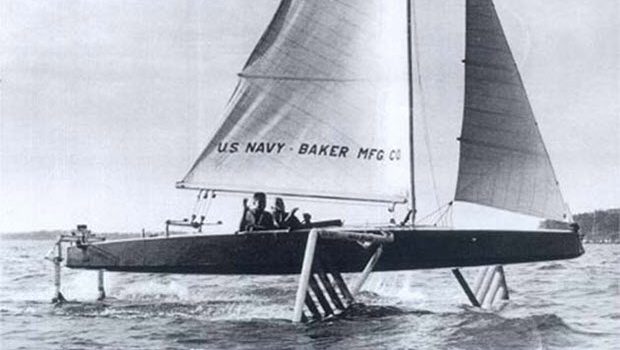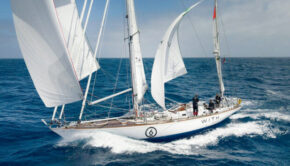Foiling: The history of the hydrofoiler
Published on January 24th, 2022
Foiling has taken the watersports world by storm in recent years, but the history of the hydrofoiler goes back further than you might think. Report by Matthew Sheahan for Yachting World:
The biggest revolution to hit watersports in general has been foiling, and it’s easy to view the use of hydrofoils as a relatively recent phenomenon.
In truth, although foiling has really taken off (if you’ll forgive the pun) in recent years in everything from surfing to sailing, paddleboarding, and beyond, the history of the hydrofoil goes back far further than many might assume.
The world of powered foilers kicked things off early but even sail-powered foiling craft are much older than you may realize.
The early development of hydrofoils started over 100 years ago when Italian Enrico Forlanini achieved 36.9 knots with his 60hp airscrew-driven boat in 1906. Several engineers took notice, among them the Wright Brothers and Alexander Graham Bell, both of whom experimented with foilborne craft.
Within a few years speeds moved briskly into the 50-knot range for power boats, but it wasn’t until 1938 that a sailing boat got up onto foils with Americans Gilruth and Carl who managed to foil at five knots. Here are some key moments:
1869 – First patent for hydrofoil was for a rowing boat, French application made by Emmanuel Denis Fargot.
1906 – First hydrofoil boat designed and built by Enrico Forlanini. It had a ladder-type construction with multiple struts supporting multiple wings. It achieved 36.9 knots.
1918 – Alexander Graham Bell and Casey Baldwin launched their HD-4, a five-tonne vessel powered by two liberty aircraft engines of 350hp each and reached 52 knots. The HD-4 Hydrodrome later set a new world record of 61.58 knots.
1938 – First known sailing hydrofoil was produced by Americans R. Gilruth and Bill Carl. – Full report








 We’ll keep your information safe.
We’ll keep your information safe.